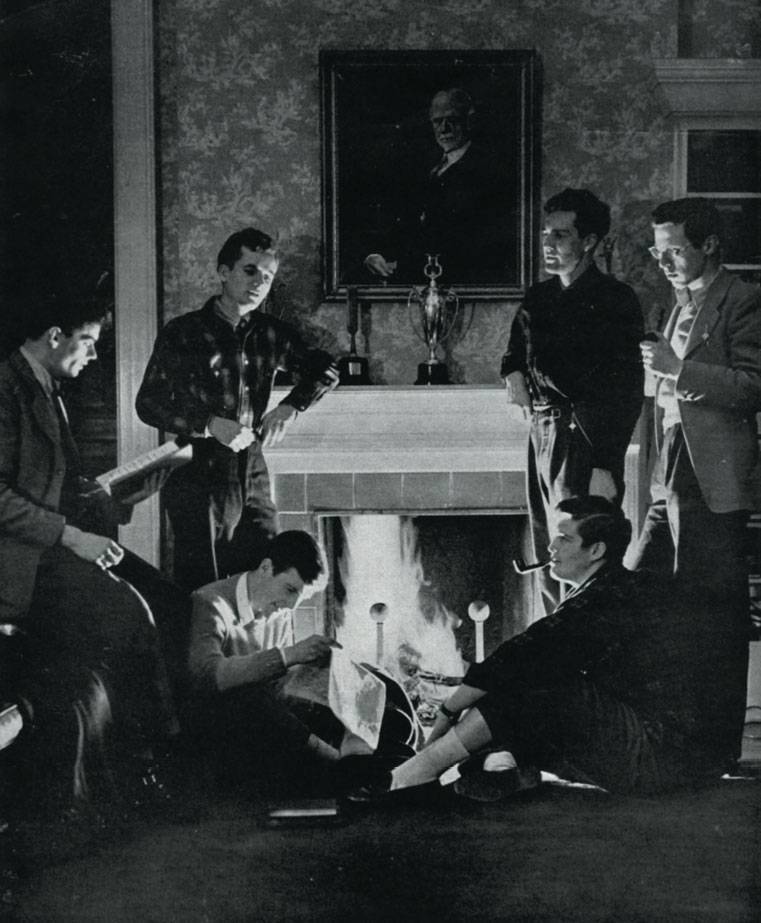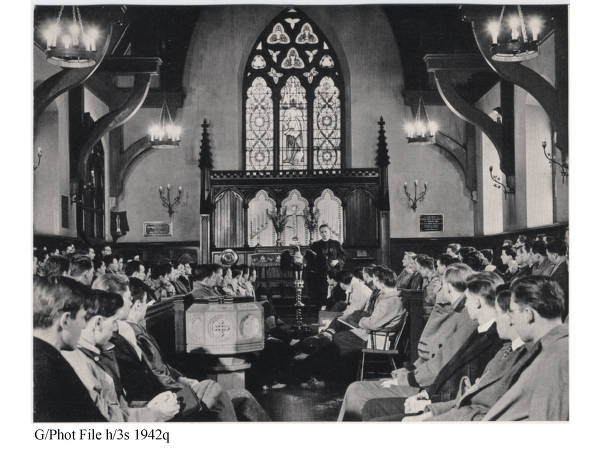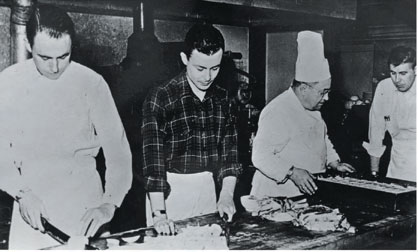The Pulteney StreetSurvey
Roots & Anchors
 O BROTHER, WHERE ART THOU?
O BROTHER, WHERE ART THOU?
Early campus social life was shaped by literary clubs like the Euglossian Society, founded by students in 1821. But those groups, which collected libraries and conducted debates, were “doomed by the rapid rise of the Greek letter fraternities,” as Warren Hunting Smith wrote in his history of the Colleges. Sigma Phi and Alpha Delta Phi began at Geneva in 1840, followed by Kappa Alpha (1844), Theta Delta Phi (1857) and Chi Phi (1860); by the early 1900s nearly all students were pledged. Novelist, historian and Theta Delta Chi brother Bellamy Partridge, 1900, noted in his reminiscence of his college years, Salad Days (1951): “The college fraternity is no oneway street. It gives a man brotherhood, friends, close companionship, and numerous intangibles, but in return it makes definite demands such as good behavior, respect, loyalty, and an appreciable amount of scholarship.” Today, roughly 20 percent of the student body participates in the eight fraternities and one sorority now active: Kappa Alpha, Chi Phi, Kappa Sigma, Delta Chi, Phi Sigma Kappa, Sigma Chi, Theta Delta Chi, Alpha Phi Alpha and Theta Phi Alpha.
 GENESIS.
GENESIS.
By the late 18th century, Geneva was a thriving community of 1,700 residents established just a mile from the original Seneca settlement Kanadesaga. The bustling village of Geneva was home to an academy, founded in 1796, that would one day become Hobart College. Thousands of graduates later, the city and the Colleges are connected in countless ways, through community-based coursework and Honors projects, service and internships, and in the lives of faculty, staff, students and alums who, in one way or another, consider it home.
 PRAYERS AND PRANKS.
PRAYERS AND PRANKS.
Hobart’s Episcopal origins structured student life for more than a century. Besides the College’s theological school, which operated from 1850 to 1920, the academic year was divided into three terms during those early years: Trinity, Epiphany and Easter. Mandatory chapel service began at 5:30 a.m. The hour would change, but attendance remained a graduation requirement until 1964, regardless of students’ spiritual affiliations. Eventually, The H Book notes, students could comply by attending services in Geneva or by passing two semesters of religion and philosophy. (Those who fell behind found themselves in the pews daily to graduate on time.) But it wasn’t all staid religious study; sophomores sold seats to unsuspecting new arrivals, and livestock was found inside the chapel, presumably let in by some Hobart jokesters.
 MEAL PLANNING.
MEAL PLANNING.
Synonymous with campus dining since the 1950s, the main student commissary was officially named the Great Hall of Saga in 1997, when the Alumni Association presented the Hobart Medal of Excellence to the Saga Corporation’s founders, William F. Scandling ’49, LL.D. ’67, W. Price Laughlin ’49, LL.D. ’67 and Harry W. “Hunk” Anderson ’49, LL.D. ’67. The World War II vets had started managing campus dining operations during their junior year, marking the beginning of Saga, which would revolutionize food service nationwide, and a momentous era in HWS history. As the company expanded, Scandling managed operations from Geneva for more than a decade, growing closer to HWS, leading to his long tenure as a Trustee, including 10 years as Board Chair; as the years passed, he became the Colleges’ largest benefactor, supporting campus building projects, the endowment and scholarships.
